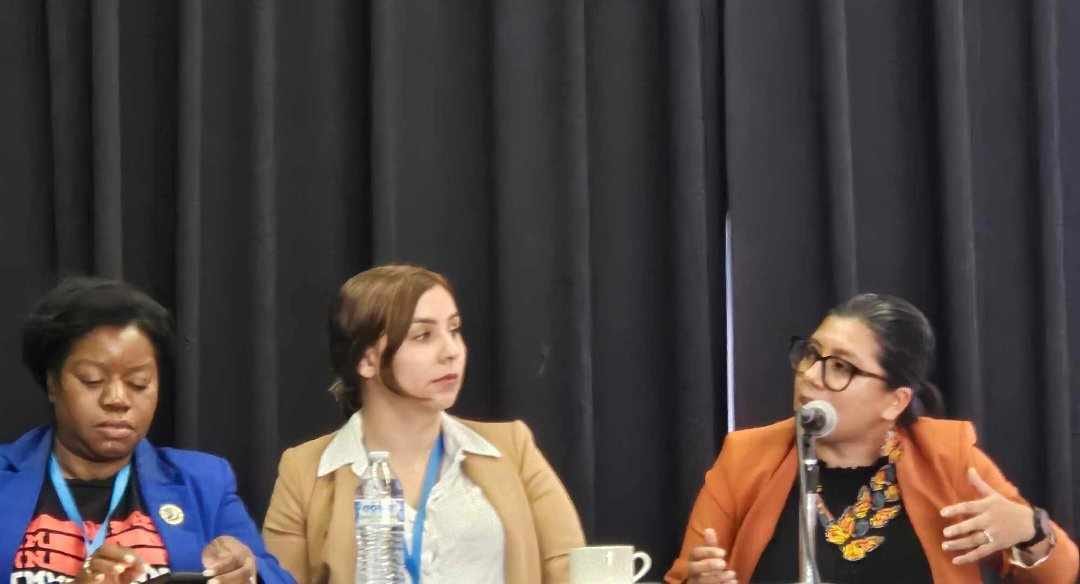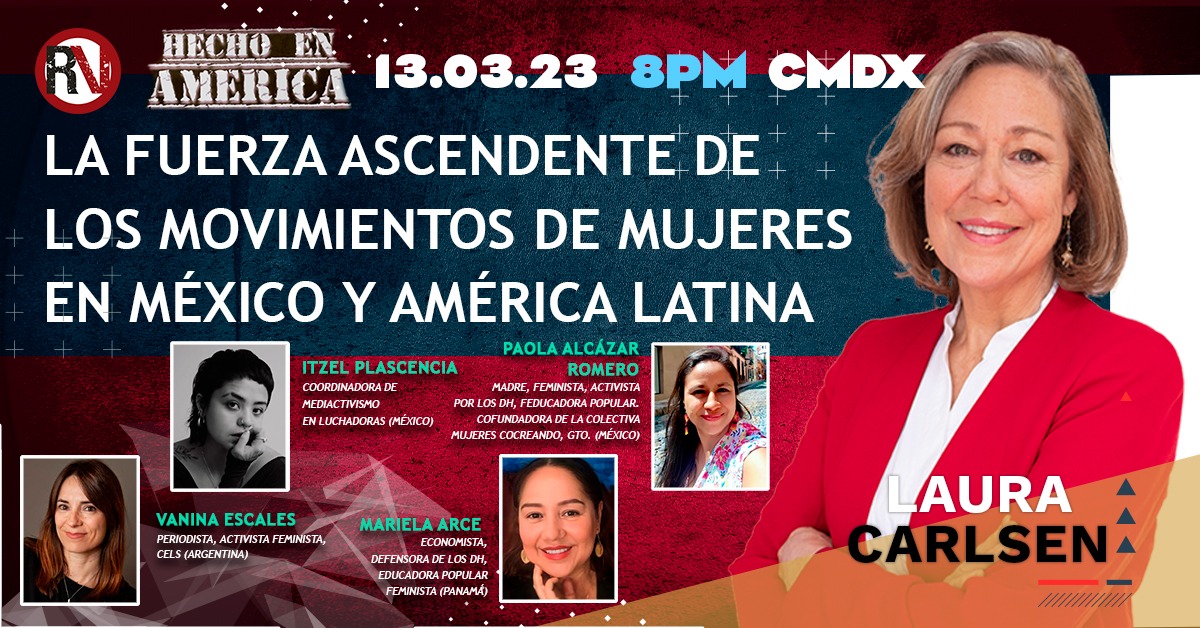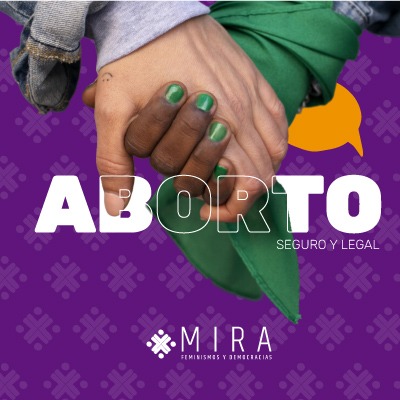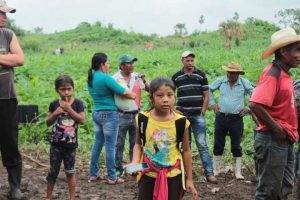 In the early 1980s, tens of thousands of Guatemalan refugees fled their country by foot as the Guatemalan military burned and massacred their villages. Accused of supporting the leftist-guerrilla movement, indigenous Maya communities were targeted by the genocidal government of military dictator Efraín Rios Montt and it was not uncommon for entire communities to flee to Mexico. About 46,000 lived in UN-run refugee camps before either naturalizing as Mexican citizens or returning to Guatemala.
In the early 1980s, tens of thousands of Guatemalan refugees fled their country by foot as the Guatemalan military burned and massacred their villages. Accused of supporting the leftist-guerrilla movement, indigenous Maya communities were targeted by the genocidal government of military dictator Efraín Rios Montt and it was not uncommon for entire communities to flee to Mexico. About 46,000 lived in UN-run refugee camps before either naturalizing as Mexican citizens or returning to Guatemala.
Now, for the first time since the signing of the 1996 Peace Accords, the Guatemalan government is once again uprooting indigenous communities in a new wave of mass displacements. A twenty-first century humanitarian disaster is brewing along the Guatemala-Mexico border.
On June 2, 2017, the government of President Jimmy Morales sent 1,500 members of the Guatemalan security forces to evict the more than 400 residents of the village of Laguna Larga. In the face of the approaching army and police forces, and hoping to avoid a violent confrontation, the families fled from the village that had been their home for than 17 years. With few belongings and no place to go, the group made its way through the dense forest of El Petén, northern Guatemala as they were reportedly pursued by a military helicopter.
The National Council of Protected Areas (CONAP), the governmental agency charged with Guatemala’s national parks, first accused the villagers of living illegally in the Laguna del Tigre National Park in 2005 and secured a court order to evict the community on March 24 of this year. The Laguna del Tigre park forms part of the protected Maya Biosphere Reserve, but the community claims it has a legal right to be there under the “multiple use” designation of the area.
“We were thrown like dogs from the place where we live and where our children were born,” community member Ezequiel Welmer told El País.
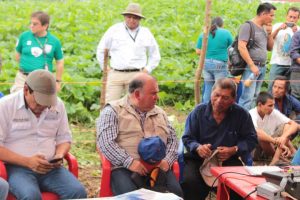 After traveling the 3 kilometers to the border, the Laguna Larga community arrived in Campeche, Mexico. There, the refugees were met by the Mexican Nacional Institute of Migration (INM) and armed federal and state police who had been informed days before of the impending eviction by the Guatemalan authorities. Barred from entering further into Mexico, the villagers were forced to stay in makeshift tents made from plastic bags on the 8-meter border zone between Campeche and El Petén. Meanwhile, their homes, school and churches were burned by the Guatemalan army, according to human rights organizations who visited the site. Five weeks later, the villagers remain stranded in the refugee camp.
After traveling the 3 kilometers to the border, the Laguna Larga community arrived in Campeche, Mexico. There, the refugees were met by the Mexican Nacional Institute of Migration (INM) and armed federal and state police who had been informed days before of the impending eviction by the Guatemalan authorities. Barred from entering further into Mexico, the villagers were forced to stay in makeshift tents made from plastic bags on the 8-meter border zone between Campeche and El Petén. Meanwhile, their homes, school and churches were burned by the Guatemalan army, according to human rights organizations who visited the site. Five weeks later, the villagers remain stranded in the refugee camp.
Unable to leave the limbo of what they call La Línea, the refugees, more than half of whom are children, suffer through the rainy season without adequate shelter and chew on edible leaves mixed with salt to alleviate their hunger. Every two weeks, the Guatemalan government sends food packages consisting of two juices, sweets, and corn fritters; otherwise the families rely on INM officials and the solidarity of surrounding Mexican communities for their daily sustenance.
Rupert Colville, the spokesman for the UN Office of the High Commissioner for Human Rights, addressed the situation at a press conference last week, saying the one hundred families were living in “extremely precarious conditions.” Colville expressed concern that the Guatemalan government may have violated international laws in the eviction. “We are gravely concerned that the evictions were ordered without ensuring firm relocation or protection plans for affected families, as demanded by international human rights standards.”
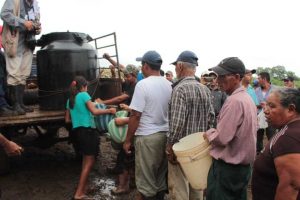 Enrique Vidal Olascoaga from Voces Mesoamericanas, a migrant advocacy group based in Chiapas, Mexico, told the Americas Program that the actions of both governments violate indigenous and refugee rights. In particular, he criticized the Mexican government for denying the refugees entry into the country and “offering humanitarian aid with arms, intimidation, fear, and threats.” This is in keeping with the country’s increasingly-Draconian immigration policies. Since the 2015 implementation of the U.S.-backed Programa Frontera Sur Mexico has detained and deported Central American migrants at a higher rate than the United States.
Enrique Vidal Olascoaga from Voces Mesoamericanas, a migrant advocacy group based in Chiapas, Mexico, told the Americas Program that the actions of both governments violate indigenous and refugee rights. In particular, he criticized the Mexican government for denying the refugees entry into the country and “offering humanitarian aid with arms, intimidation, fear, and threats.” This is in keeping with the country’s increasingly-Draconian immigration policies. Since the 2015 implementation of the U.S.-backed Programa Frontera Sur Mexico has detained and deported Central American migrants at a higher rate than the United States.
Vidal Olascoaga recently returned from a fact-finding visit to the displaced community organized by Voces Mesoamericanas, Equipo Indignación, Migrant Shelter La 72, and Resistencia Civil de Candelaria. The groups’ statement calls for “humanitarian aid in accordance with the severity of the situation and the principles and directives of the United Nations.”
The organizations claim that the Guatemalan government’s refusal to meaningfully engage with the community to find alternative solutions to forced eviction demonstrates its “deep contempt and discrimination towards the Maya people of the community of Laguna Larga, among whom are Maya Q’eqchi’, Chuj, and Mestizo people.”
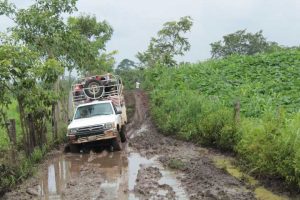 Vidal Olascoaga calls the Guatemalan government’s actions “state terror.” He visited the ruins of the village and said that in addition to burning the entire village and its inhabitants’ belongings, security forces guarding the site admitted to eating the villagers’ livestock, an action he describes as both economically-devastating and humiliating.
Vidal Olascoaga calls the Guatemalan government’s actions “state terror.” He visited the ruins of the village and said that in addition to burning the entire village and its inhabitants’ belongings, security forces guarding the site admitted to eating the villagers’ livestock, an action he describes as both economically-devastating and humiliating.
“They’re purposely inflicting terror and humiliation on the population, which is to say that we’re returning to the same mechanisms used in Guatemala’s internal armed conflict,” he stated. “What the government of Guatemala is looking to do, and what they’ve done during past violent displacements, is to dismantle the community organization so that there isn’t a collective demand for the return of their land.”
The community continues to assert its right to return to their land, but the Guatemalan government insists on resettling them somewhere outside of the Biosphere. Vidal Olascoaga says the community has good reason to be skeptical of this offer, as past displaced populations have been moved to land that is unproductive or lacks a water supply, making it impossible to truly reestablish the community.
Displacement and Militarization
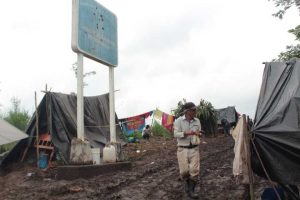 Neither Guatemala nor Mexico are engaged in formal armed conflicts. However, both countries receive massive financial backing from the United States to fight an increasingly militarized war on drug traffickers and organized crime–at least in theory.
Neither Guatemala nor Mexico are engaged in formal armed conflicts. However, both countries receive massive financial backing from the United States to fight an increasingly militarized war on drug traffickers and organized crime–at least in theory.
Dawn Paley, author of the book “Drug War Capitalism,” describes the war on drugs as more accurately a “war against people, waged with far wider interests than controlling substances.” Among those, she lists facilitating international investment through the suppression or removal of popular opposition. In El Petén, human rights groups cite “foreign investments in oil extraction, oil palm monocultures, gas pipelines, tourism, groundwater extraction, and organized crime” as geopolitical interests that are threatening the ecology of the area and local communities.
In a rep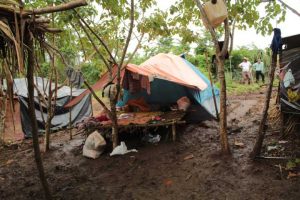 ort on the Laguna Larga situation, the International Jurists Commission (CIJ) notes that CONAP’s justification for evicting the community seems spurious given the continued operation of the French-British oil company Perenco within the park. Studies have found that Perenco’s operations in the Laguna del Tigre are causing pollution, deforestation, and are depleting the area’s freshwater reserves, which rank among the most important in Central America. CONAP itself identified oil extraction as a major threat to the integrity of the park in its original draft of the 2007 Master Plan for the Laguna del Tigre. However, the final version of the plan eliminated all language related to oil extraction and in 2010 the Guatemalan government extended Perenco’s contract to operate within the protected area for another 15 years. In 2012, Sergio Enrique Véliz Rizzo, a former CONAP official, was sentenced to three years in jail for his role in altering the document.
ort on the Laguna Larga situation, the International Jurists Commission (CIJ) notes that CONAP’s justification for evicting the community seems spurious given the continued operation of the French-British oil company Perenco within the park. Studies have found that Perenco’s operations in the Laguna del Tigre are causing pollution, deforestation, and are depleting the area’s freshwater reserves, which rank among the most important in Central America. CONAP itself identified oil extraction as a major threat to the integrity of the park in its original draft of the 2007 Master Plan for the Laguna del Tigre. However, the final version of the plan eliminated all language related to oil extraction and in 2010 the Guatemalan government extended Perenco’s contract to operate within the protected area for another 15 years. In 2012, Sergio Enrique Véliz Rizzo, a former CONAP official, was sentenced to three years in jail for his role in altering the document.
The violent displacement of the Laguna Larga community also raises serious questions regarding the priorities of the Guatemalan government. The use of Guatemala’s security forces, which receive funding from the U.S. as part of the drug war, to drive out indigenous communities is especially concerning when so much of the problem of deforestation is caused by the money-laundering operations of drug traffickers. A 2017 study concluded that drug traffickers are responsible for up to 30% of deforestation in Central America, and that “drug trafficking and money laundering through cattle ranching is increasing cited as principal drivers in departments with high rates of forest loss such as in Guatemala’s Petén.”
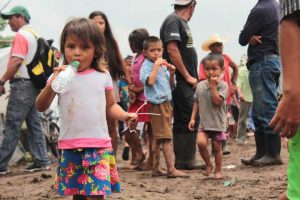 Drug war rhetoric is also invoked to demonize the displaced villagers as government officials suggest drug traffickers pay communities to do their “dirty work” including lighting forest fires to clear land for grazing or clandestine air strips. Vidal Olascoaga believes that communities like Laguna Larga actually play the opposite role–of inhibiting the expansion of land use by cartels and illegal logging and other extractive operations. In 2016, the UN affirmed the role of indigenous peoples as environmental stewards against “extractive industry, energy and infrastructure projects” and concluded “full recognition of indigenous land rights and participation are key enabling conditions for conservation to be sustained.”
Drug war rhetoric is also invoked to demonize the displaced villagers as government officials suggest drug traffickers pay communities to do their “dirty work” including lighting forest fires to clear land for grazing or clandestine air strips. Vidal Olascoaga believes that communities like Laguna Larga actually play the opposite role–of inhibiting the expansion of land use by cartels and illegal logging and other extractive operations. In 2016, the UN affirmed the role of indigenous peoples as environmental stewards against “extractive industry, energy and infrastructure projects” and concluded “full recognition of indigenous land rights and participation are key enabling conditions for conservation to be sustained.”
Indigenous Communities Evicted, Deforestation Continues
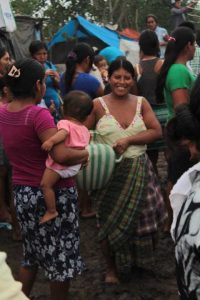 Cattle ranching is the single most important contributor to forest loss, responsible for having destroyed 8% of the Maya Biosphere Reserve. The expansion has been driven in large part by “narco-ranchers” who launder their profits from the illegal drug trade through investments in cattle farms. Roan Balas McNab, director of the Wildlife Conservation Society, estimates that 95% of the land in the Laguna del Tigre that has been converted from forest to agriculture is being used for cattle grazing, while only 5% is occupied by the kind of subsistence farming practiced by the Laguna Larga community. Guatemalan journalist Sebastián Escalon recently visited the Laguna del Tigre and reported seeing mansions and large cattle farms operating openly within the protected area. Escalon casts doubt on the political will of the Guatemalan government to protect the park by pointing out that CONAP receives annually only Q100 million (US$13.6 million) or 0.13% of the national budget, yet is expected to steward 33% of Guatemala’s total national territory.
Cattle ranching is the single most important contributor to forest loss, responsible for having destroyed 8% of the Maya Biosphere Reserve. The expansion has been driven in large part by “narco-ranchers” who launder their profits from the illegal drug trade through investments in cattle farms. Roan Balas McNab, director of the Wildlife Conservation Society, estimates that 95% of the land in the Laguna del Tigre that has been converted from forest to agriculture is being used for cattle grazing, while only 5% is occupied by the kind of subsistence farming practiced by the Laguna Larga community. Guatemalan journalist Sebastián Escalon recently visited the Laguna del Tigre and reported seeing mansions and large cattle farms operating openly within the protected area. Escalon casts doubt on the political will of the Guatemalan government to protect the park by pointing out that CONAP receives annually only Q100 million (US$13.6 million) or 0.13% of the national budget, yet is expected to steward 33% of Guatemala’s total national territory.
Illicit drug money made in the U.S. is not the only link between the U.S. interests and environmental degradation in El Petén. Earlier this year, an investigative report found that the giant U.S. pension fund TIAA is now the largest global investor in farmland and agribusiness, including $433.65 million in worldwide palm oil production. In Guatemala, TIAA invests in Cargill as well as Singapore-based Wilmar International, which receive their palm oil from REPSA, a Guatemalan company that has transformed 96 square miles of El Péten’s forests into palm monoculture. In 2015, REPSA was found guilty of ecocide after overflowing effluent from its fields poisoned a 65-mile stretch of the Pasión River. Thousands of fish died and 12,000 local families lost their livelihoods.
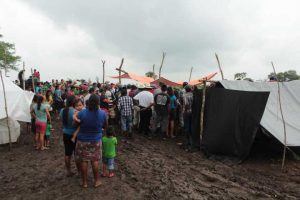 The New Yorker reported that the day after a Guatemalan judge ordered a six-month halt to REPSA’s operations, Rigoberto Lima Choc, the indigenous school teacher who led the legal case against the company, was shot and killed on the courthouse steps. His was one of a string of murders that have made Guatemala and Honduras the most dangerous countries in the world to be an environmental activist. Cargill issued a statement denouncing REPSA’s use of violence and intimidation and threatened to withdraw its contracts with the company, but has yet to take action against its supplier.
The New Yorker reported that the day after a Guatemalan judge ordered a six-month halt to REPSA’s operations, Rigoberto Lima Choc, the indigenous school teacher who led the legal case against the company, was shot and killed on the courthouse steps. His was one of a string of murders that have made Guatemala and Honduras the most dangerous countries in the world to be an environmental activist. Cargill issued a statement denouncing REPSA’s use of violence and intimidation and threatened to withdraw its contracts with the company, but has yet to take action against its supplier.
As subsistence farmers are being blamed for deforestation and indigenous leaders are attacked for defending the environment, the industries primarily responsible for threatening Guatemala’s forests are getting a major boost. In mid June at a conference in Miami, the Trump administration recommitted to the Alliance for Prosperity, a plan to boost foreign investment in the region. The Trump version of the plan focuses on increasing private investment and border crackdowns in the Northern Triangle. Instead of strengthening human rights, the plan will continue to promote environmentally and socially destructive megaprojects and will increase abuses against refugees trying to cross into Mexico. During the conference, Guatemala’s Defense Minister Juan Manuel Pérez also celebrated plans to build an operational base for the U.S. Southern Command in El Petén. Despite concern from members of Congress, U.S.-funded militarization of the region is increasing.
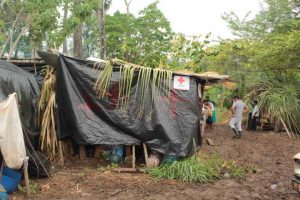 The eviction of Laguna Larga was just the first of four communities with standing court-ordered eviction notices, according to Pilar Montejo, Legal Director of CONAP. La Mestiza, a community of 50 families, was set to be evicted on June 21; but that order was stayed as the government awaits the decision of a court appeal filed by Laguna Larga in the Constitutional Court of Guatemala. If the court ultimately rules in the community’s favor, they will be allowed to return to their land. If not, the UN warns of a “situation of crisis and violence” as the residents of Laguna Larga, along with those of the estimated 36 other communities living within the protected area, face permanent displacement while those truly responsible for the destruction of Guatemala’s forests continue to operate with impunity.
The eviction of Laguna Larga was just the first of four communities with standing court-ordered eviction notices, according to Pilar Montejo, Legal Director of CONAP. La Mestiza, a community of 50 families, was set to be evicted on June 21; but that order was stayed as the government awaits the decision of a court appeal filed by Laguna Larga in the Constitutional Court of Guatemala. If the court ultimately rules in the community’s favor, they will be allowed to return to their land. If not, the UN warns of a “situation of crisis and violence” as the residents of Laguna Larga, along with those of the estimated 36 other communities living within the protected area, face permanent displacement while those truly responsible for the destruction of Guatemala’s forests continue to operate with impunity.

